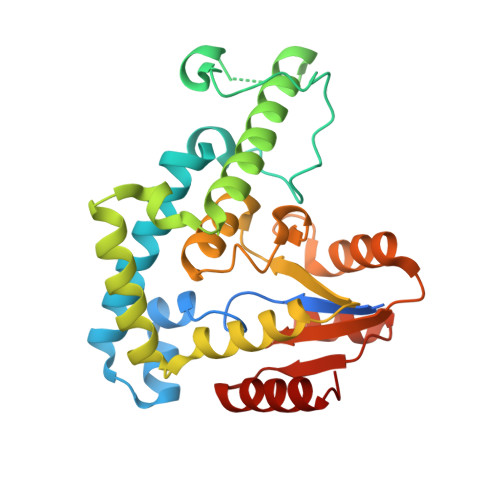Structure-function analyses of the human SIX1-EYA2 complex reveal insights into metastasis and BOR syndrome.
Patrick, A.N., Cabrera, J.H., Smith, A.L., Chen, X.S., Ford, H.L., Zhao, R.(2013) Nat Struct Mol Biol 20: 447-453
- PubMed: 23435380
- DOI: https://doi.org/10.1038/nsmb.2505
- Primary Citation of Related Structures:
4EGC - PubMed Abstract:
SIX1 interacts with EYA to form a bipartite transcription factor essential for mammalian development. Loss of function of this complex causes branchio-oto-renal (BOR) syndrome, whereas re-expression of SIX1 or EYA promotes metastasis. Here we describe the 2.0-Å structure of SIX1 bound to EYA2, which suggests a new DNA-binding mechanism for SIX1 and provides a rationale for the effect of BOR syndrome mutations. The structure also reveals that SIX1 uses predominantly a single helix to interact with EYA. Substitution of a single amino acid in this helix is sufficient to disrupt SIX1-EYA interaction, SIX1-mediated epithelial-mesenchymal transition and metastasis in mouse models. Given that SIX1 and EYA are overexpressed in many tumor types, our data indicate that targeting the SIX1-EYA complex may be a potent approach to inhibit tumor progression in multiple cancer types.
Organizational Affiliation:
Department of Obstetrics and Gynecology, University of Colorado Anschutz Medical Campus, Aurora, Colorado, USA.


















